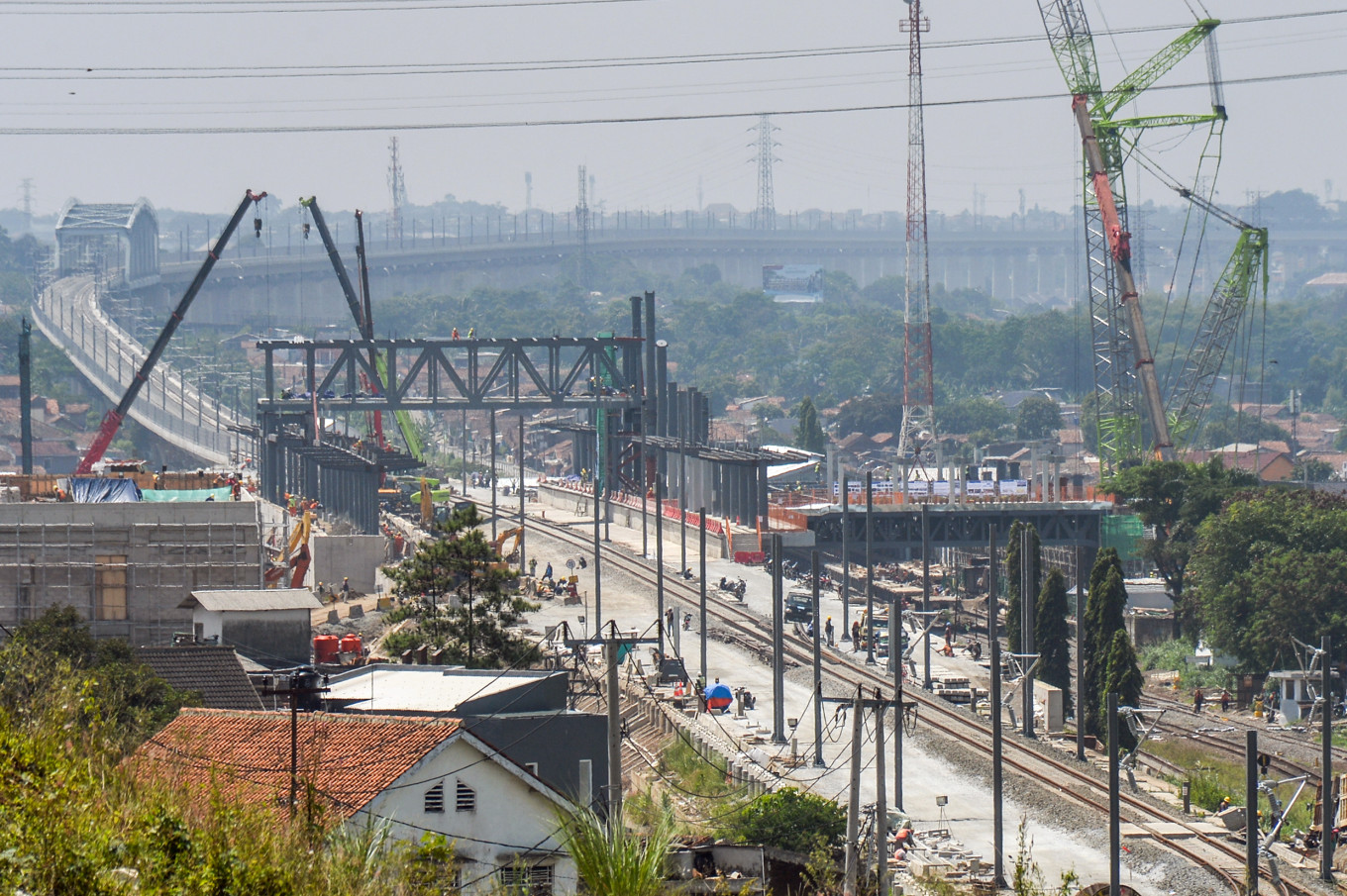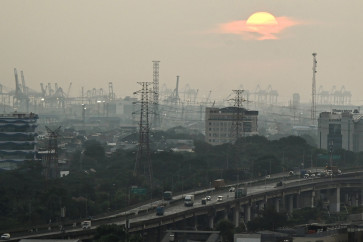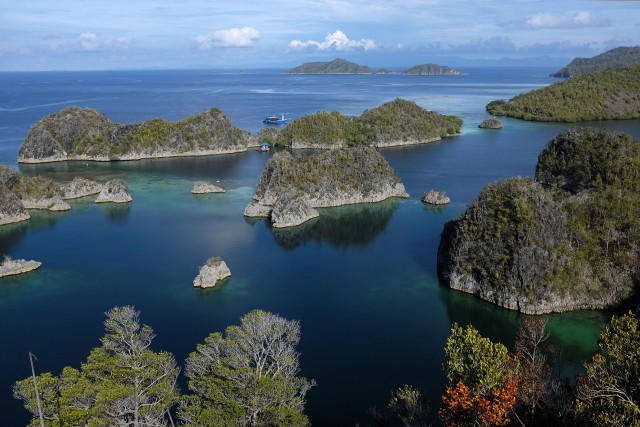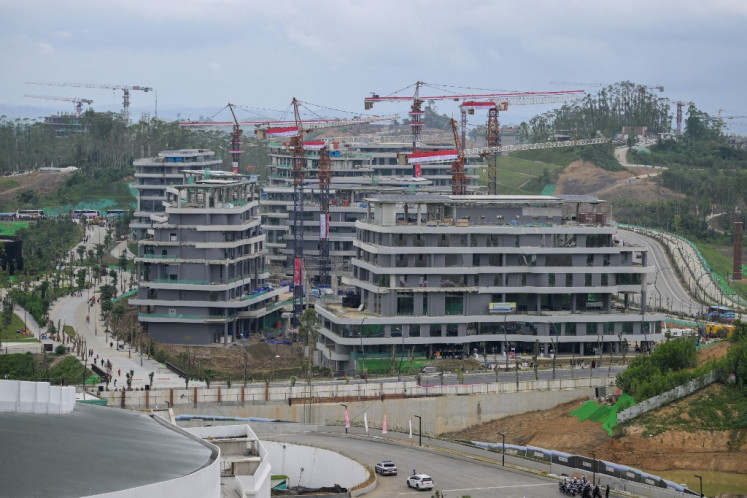Public-private joint ventures to develop transportation sector
The KPBU is an example of creative financing structures that are emerging in response to Indonesia’s infrastructure needs and the government’s limited funding capabilities.
Change text size
Gift Premium Articles
to Anyone

I
ndonesia’s transportation sector is undergoing a major transformation, thanks in part to the innovative financing model known as Kerjasama Pemerintah dengan Badan Usaha (KPBU) or Government Cooperation with Business Entities, a type of public-private partnership (PPP) arrangement used in Indonesia to fund infrastructure projects. The KPBU was introduced in 2010 under Law No. 25/2007 on Investment, and it is governed by a set of regulations issued by the Finance Ministry.
Theoretically speaking, by tapping into private sector funding and expertise, the government can access resources that may not be available through traditional financing channels. Private partners are incentivized to invest through revenue-sharing arrangements and other guarantees provided by the government.
Meanwhile, the government maintains ownership of the asset and shares in the risks and rewards of the project. As Indonesia continues to invest in infrastructure, the KPBU is likely to play a key role in achieving these goals.
For instance, according to the Medium-Term Development Plan (RPJMN) 2020-2024, the financing needs for infrastructure development in Indonesia are estimated at Rp 6.4 quadrillion (US$427 billion). of which only 37 percent or Rp 2.3 quadrillion is expected from the state budget and the remainder from the private sector.
As of December 2020, a total of 34 KPBU projects worth Rp 284.8 trillion have reached financial closure. They cover various sectors such as transportation, energy, water supply, waste management and public lighting.
The KPBU is an example of creative financing structures that are emerging in response to Indonesia’s infrastructure needs and the government’s limited funding capability. This has led the government to prioritize the KPBU, with the establishment of a specialized unit within the Finance Ministry to oversee such projects.
According to the Sector Review Report, transportation is one of the six priority sectors for KPBU projects in Indonesia, along with water, energy, urban infrastructure, health and education. Indonesia’s transport sector has seen several successful infrastructure projects developed under the KPBU scheme, including the Trans-Java toll road, which spans over 1,100 kilometers and has expedited connectivity between cities and regions, reduced travel time and promoted economic development. Terminal 3 at Soekarno-Hatta International Airport in Tangerang, Banten, is another success story as it has improved capacity and efficiency, as well as a better passenger experience.
The New Priok Container Terminal (NPTC), developed in partnership with international investors, is Indonesia’s largest container terminal and has increased cargo handling efficiency and reduced congestion in Jakarta’s port area. The Jakarta-Bandung High-Speed Rail project is another exciting development under the KPBU scheme, with private sector partners providing financing and technology to reduce travel time between Jakarta and Bandung to just 45 minutes. Other completed KPBU projects in the transport sector include the Solo-Ngawi toll road and the Palembang Light Rail Transit project.
There are 31 KPBU projects planned for 2023, with a total value of Rp 212.52 trillion. The most common sectors are housing, water resources, roads and bridges, and some of the projects are located in the new capital city of Nusantara.
These projects have helped to bridge infrastructure gaps, enhance connectivity and mobility and promote economic growth. The government has identified the KPBU as a priority for infrastructure development, and according to the Finance Ministry there are currently five KPBU projects underway in the transportation sector, including New Ambon Port in Maluku, New Palembang Port in Tanjung Carat, in Banyuasin, South Sumatra, the Proving Ground Roadworthiness Testing & Motor Vehicle Certification Center (BPLJSKB) in Bekasi, West Java, Singkawang Airport in West Kalimantan and Makassar-Parepare Railway in South Sulawesi.
The KPBU scheme thus comes with several benefits over traditional government funding and build-operate-transfer (BOT) models. Foremost, the KPBU allows the government to leverage private sector financing, which can supplement limited government funding for infrastructure development. The scheme’s risk-sharing and reward-sharing principles between the government and private sector partner align both parties’ interests and enhance project outcomes. No wonder it is lauded as a more flexible and collaborative approach to tackle Indonesia’s infrastructure development challenges.
Moreover, the KPBU enables the government to tap into private sector expertise in infrastructure design, construction and operation, leading to improved project quality and efficiency. The KPBU process also entails a comprehensive project preparation process to ensure projects are well-designed, financially viable and meet stakeholders’ needs, boosting overall infrastructure success.
What is more, the KPBU’s transparent procurement process ensures the private sector partner reports on project performance and complies with contractual obligations, enhancing transparency and accountability in infrastructure development.
In the transportation sector, the benefits of these projects are evident, for example: improving connectivity and accessibility between regions and cities, which can boost trade, tourism and economic growth; reducing congestion, travel time and transportation costs for passengers and goods; enhancing safety and comfort for travelers and reducing accidents; promoting environmental sustainability and reducing greenhouse gas emissions by using cleaner and more efficient modes of transport; creating jobs and income opportunities for local communities during construction and operation phases; and leveraging private sector expertise, innovation and efficiency in delivering high-quality infrastructure services. Indeed, such benefits can also generate positive spillover effects for other sectors such as health, education, energy, water and sanitation.
Despite the benefits, however, this scheme is not without its challenges and drawbacks. One significant challenge is the complexity of structuring KPBU projects, which can require significant resources and expertise to prepare and implement. Without the necessary capacity to manage the process, delays and increased costs can arise.
Another challenge of the KPBU is the regulatory environment, which is governed by regulations issued by the Finance Ministry. These regulations can be subject to change and interpretation, creating uncertainty for private sector partners and potentially deterring investment in infrastructure projects.
Finding the right private sector partner can also be difficult, particularly for high-risk or non-commercially viable projects. This can lead to a lack of interest from potential partners, resulting in delayed or canceled projects. Cost overruns are another concern, especially if the private sector partner underestimates project costs or faces unforeseen technical or environmental issues. This can increase costs for the government and reduce value for money.
Additionally, KPBU projects typically involve revenue-sharing arrangements between the government and private sector partners, which can be impacted by overly optimistic revenue projections or underperformance of the project. This can impact the project’s financial viability and the government’s ability to receive expected revenue. Lastly, political risks can impact the viability of KPBU projects. Changes in government policies or regulations can lead to delays or cancellations of projects, creating uncertainty for private sector partners.
The Transportation Ministry is currently improving the efficiency and transparency of its policies by streamlining red tape bureaucratic processes, increasing transparency in procurement and implementation and strengthening accountability mechanisms. This can be achieved through greater public participation in decision-making processes, as well as by using technology such as open data platforms and e-procurement systems.
In addition, the Indonesian government’s policy has been accused of lacking transparency and accountability, with concerns raised about corruption and rent-seeking in the procurement and implementation of infrastructure projects. This can lead to inflated costs, subpar quality and delayed delivery. To address these issues, the government needs to enhance the efficiency and transparency of its infrastructure development policies.
***
The writer teaches at the School of Economics and Business, Gadjah Mada University, and is an adviser at the Transportation Ministry. The views expressed are personal.









